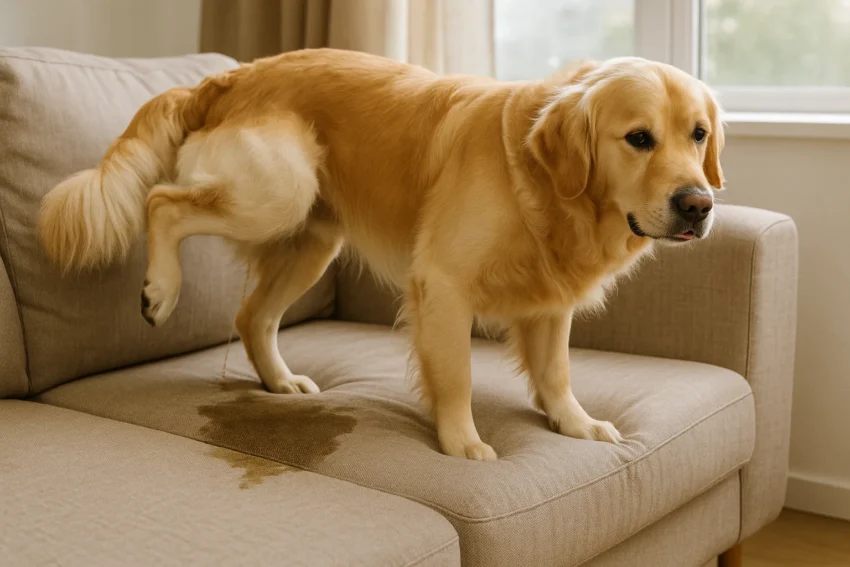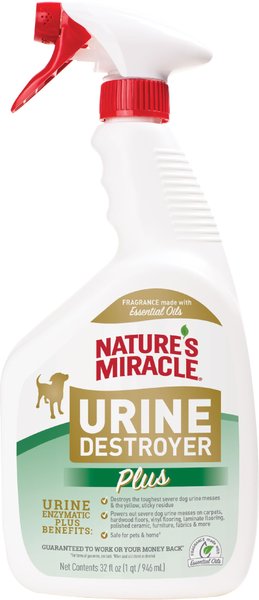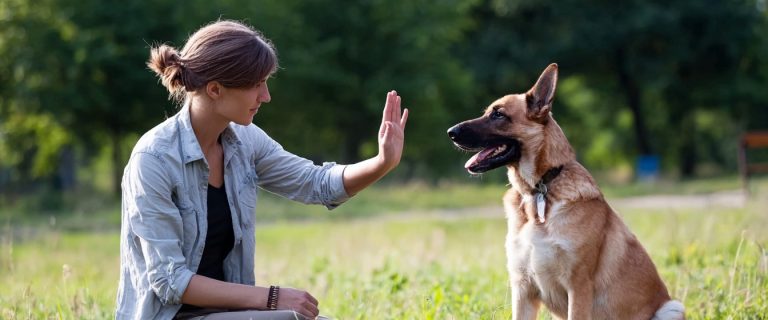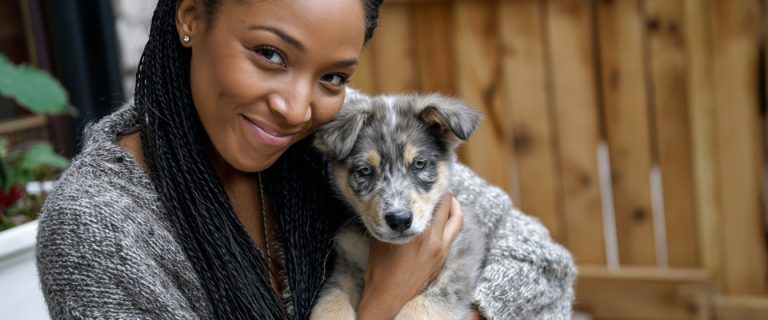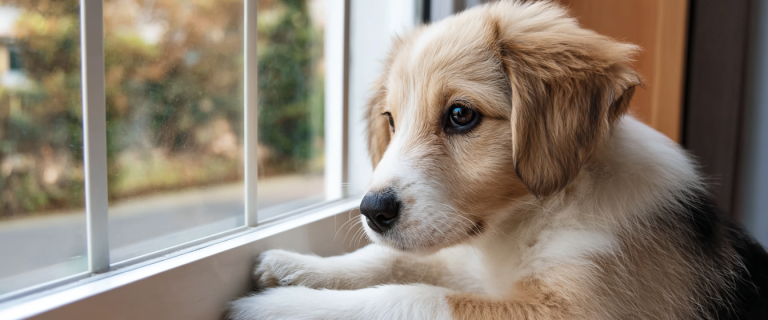Let’s be honest—nothing sends dog parents into panic (or frustration) mode faster than walking into a room and stepping in a surprise puddle. If you’ve found yourself frantically Googling “dog peeing in the house,” you’re not alone. It’s one of the most common concerns dog owners share, even among those with dogs who’ve been reliably potty trained for years.
The truth is, when a dog starts peeing indoors, it’s not always about “bad behavior” or training failure. In fact, there are a lot of possible reasons behind it—some medical, some emotional, and yes, some environmental. Below, we’ll look at some ways to identify the issue and stop it.
Dog Peeing in the House? Here are 5 Ways to Stop It.
This post isn’t your basic potty training 101 guide. Instead, we’re diving into five actionable strategies to help you stop your dog from peeing in the house by uncovering the root cause—and fixing it.
1. Rule Out Medical Issues First
Before assuming your dog is backsliding or acting out, book a vet visit. A sudden increase in accidents could be a red flag for underlying health issues, even in adult dogs who’ve been housebroken for years.
Here are a few medical reasons your dog might be peeing in the house:
- Urinary Tract Infection (UTI): UTIs are incredibly common, especially in female dogs. Symptoms include frequent urination, straining to pee, and sometimes even blood in the urine.
- Bladder or Kidney Stones: These can cause discomfort and inflammation, making it hard for your dog to hold their urine. In some cases, they may only dribble urine or seem like they’re trying to go multiple times with little output.
- Diabetes Mellitus: Dogs with diabetes tend to drink a lot of water, which of course leads to more frequent urination. If your dog is also losing weight or seems more tired than usual, it’s worth mentioning to your vet.
- Cushing’s Disease: Common in older dogs, this hormonal condition can cause excessive thirst and urination, along with other signs like a pot-bellied appearance or hair loss.
- Kidney Disease: Like diabetes and Cushing’s, kidney problems often result in increased urination. You may also notice a change in appetite, lethargy, or vomiting.
- Incontinence: Particularly common in senior dogs or spayed females, incontinence isn’t really about accidents—your dog may be leaking urine without even realizing it.
- Medication Side Effects: Some meds, especially corticosteroids, can cause increased urination. If your dog just started a new prescription, check the label or talk to your vet about whether this might be a side effect.
Red flags to watch for:
- Sudden increase in accidents, especially in a house-trained dog
- Unusual urine color or odor
- Peeing while sleeping or at rest
- Excessive licking of the genital area
- Increased thirst or appetite changes
- Lethargy or changes in personality
If any of these sound familiar, don’t wait it out. A quick vet visit can rule out (or treat) medical issues early—before they become bigger problems.
Pro tip: Keep a log of when and how often your dog is having accidents. This info can help your vet make a faster diagnosis.
2. Eliminate All Traces of Urine—Properly
Think that quick once-over with some dish soap is enough to clean up the mess? Think again.
Dogs have ultra-sensitive noses, and if they can still smell urine—even faintly—they’ll likely return to the same spot. Why? Because to them, that spot now smells like a designated bathroom. It’s what we call territorial marking.
To break the cycle, use a high-quality enzymatic cleaner. These cleaners don’t just mask odors—they break down the urine at a molecular level, eliminating the scent completely. Skip the DIY vinegar-and-baking soda mix for this one. It’s worth investing in the good stuff.
✅ Bonus Tip: Use a blacklight to spot hidden pee stains that your eyes (but not your dog’s nose) can’t detect.
Make cleanups a breeze with Nature’s Miracle Urine Destroyer Plus Dog. This enzymatic cleaner is tough on dog urine and the yellow, sticky residue it leaves behind. The bacteria-based formula produces enzymes when it comes into contact with urine and continues working until the mess is gone. Plus, it leaves behind a pleasant scent made from essential oils.
Related:4 Foolproof Steps to Get Rid of Dog Urine Smell in Carpets
3. Reevaluate Your Schedule and Setup
Sometimes the issue isn’t your dog—it’s the routine. If your pup is holding it too long or not getting enough outdoor time, accidents are going to happen. Dogs thrive on structure, so inconsistencies can lead to confusion and messes.
Ask yourself:
- Am I taking my dog out regularly enough?
- Does my dog have to wait more than 6–8 hours between potty breaks?
- Is someone home to let them out during the day?
- Do they get a final potty break right before bed?
Even dogs with iron bladders can’t be expected to hold it for 10+ hours. If your schedule isn’t working, consider hiring a dog walker, investing in a smart dog door, or setting up a designated indoor potty spot with potty pads or turf if necessary.
4. Observe Your Dog’s Patterns and Triggers
Not all indoor peeing is random. In fact, it often follows a pattern—if you know what to look for.
Here are some questions to consider:
- Does your dog only pee inside when you’re not home?
- Is it always in the same spot?
- Does it happen after guests leave or a new pet enters the home?
- Is your dog displaying other anxious behaviors like whining or chewing?
These clues can help you figure out if the issue is behavioral, such as:
- Separation anxiety
- Territorial marking
- Fear or stress triggers
Once you identify the “why,” you can start working on a targeted fix—whether that’s more mental stimulation, crate training, or behavior modification exercises.
5. Address Anxiety Head-On
Anxiety is a major—and often overlooked—cause of potty problems, especially in sensitive or rescue dogs. Big life changes can throw even the most well-adjusted pup off their game.
Triggers can include:
- Moving to a new home
- A new baby or pet in the household
- A sudden change in routine (e.g., working from home to returning to the office)
- Loud noises or ongoing stressors (like construction or fireworks)
Dogs dealing with anxiety may urinate as a coping mechanism or because their stress makes it harder to control bodily functions. To help your dog, try:
- Calming pheromone sprays or diffusers
- Anxiety wraps like the ThunderShirt
- Plenty of exercise and enrichment
- Training games that build confidence
- In severe cases, talk to your vet about anxiety medications or a consult with a certified dog behaviorist
ThunderShirt is light-weight, breathable, and machine washable, fit for all climates and lifestyles. It is easy to use; simply fasten the straps around your dog’s neck and torso to apply gentle calming pressure: No training required
Final Thoughts: You Can Stop Your Dog From Peeing in the House
While dealing with indoor accidents can be frustrating, it’s important to remember that your dog isn’t doing it out of spite or stubbornness. There’s always a reason—and once you find it, you’re already halfway to solving the problem.
Start with a vet visit. Then, clean up past mistakes (literally and figuratively), assess your routine, and keep a close eye on behavior patterns. With patience, observation, and a little detective work, you can reclaim your carpets and help your dog feel confident again.
Have you dealt with your dog peeing in the house? How did you correct it? Share your thoughts and experiences below.
Author
-

Hi there! I'm Nicole, the editor-in-chief and one of the writers here at DogVills. I've been a dog owner for most of my adult life and a dog lover for much longer than that. I grew up with a wonderful German Shepherd named Jake, who I loved SO much that I named my son after him. When I'm not writing for DogVills or my own site, Pretty Opinionated, I love spending time with my teenager (when he actually lets me) and my Pharaoh Hound, Freya. I'm also an avid reader AND a total TV fanatic.
View all posts
